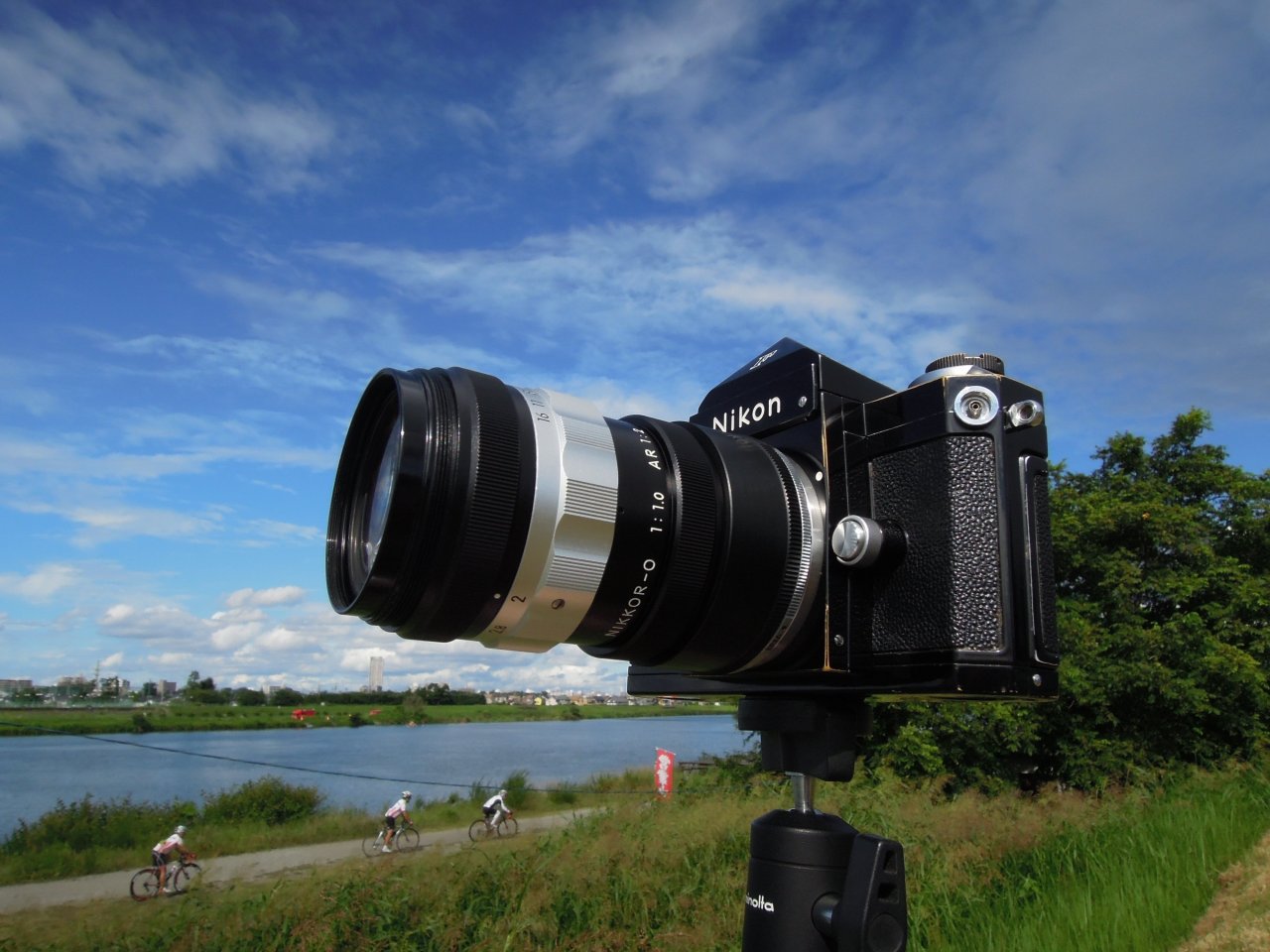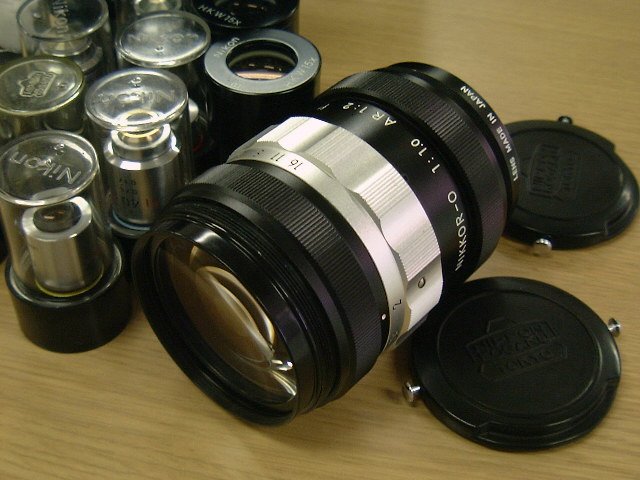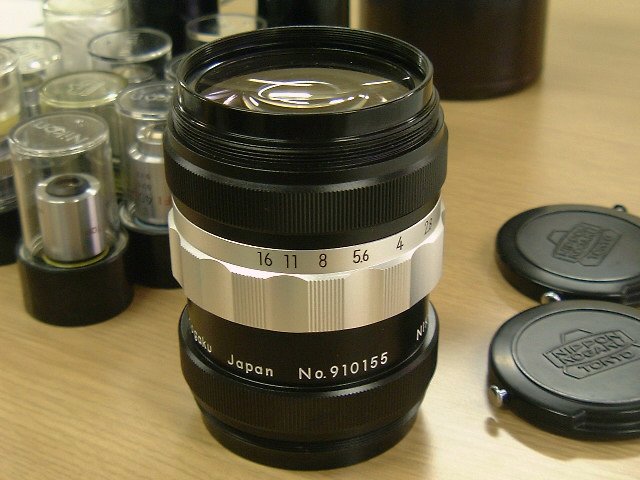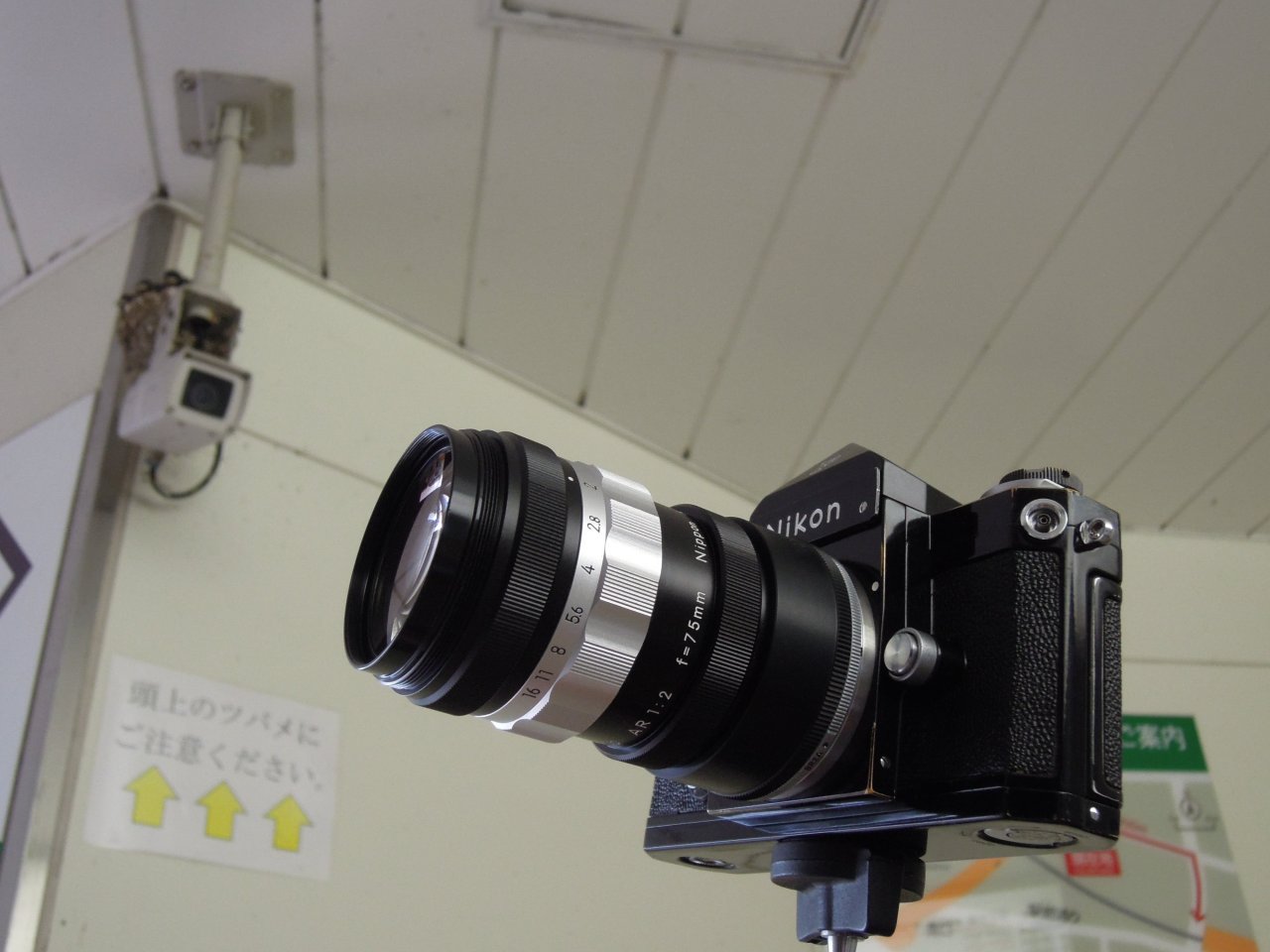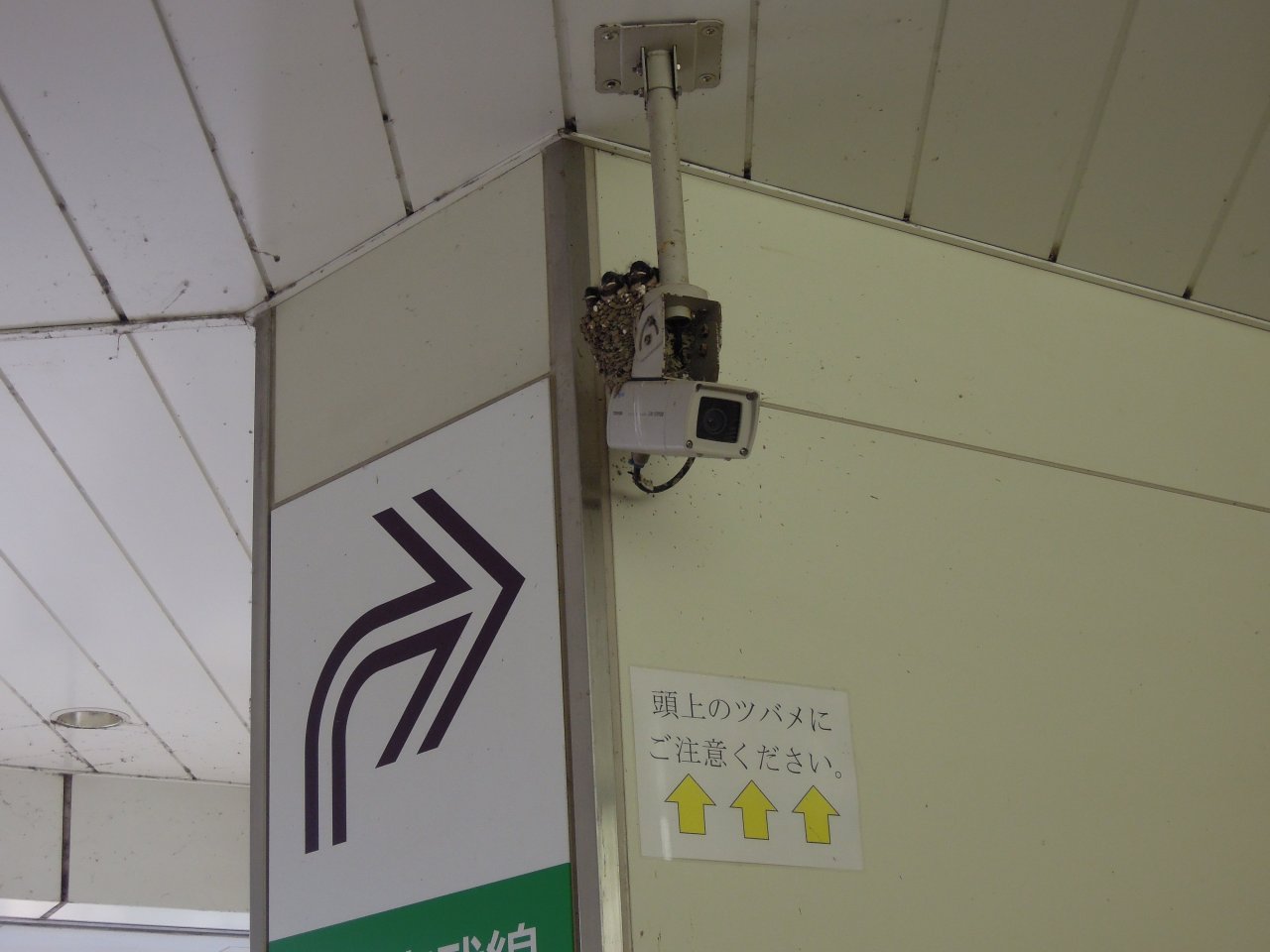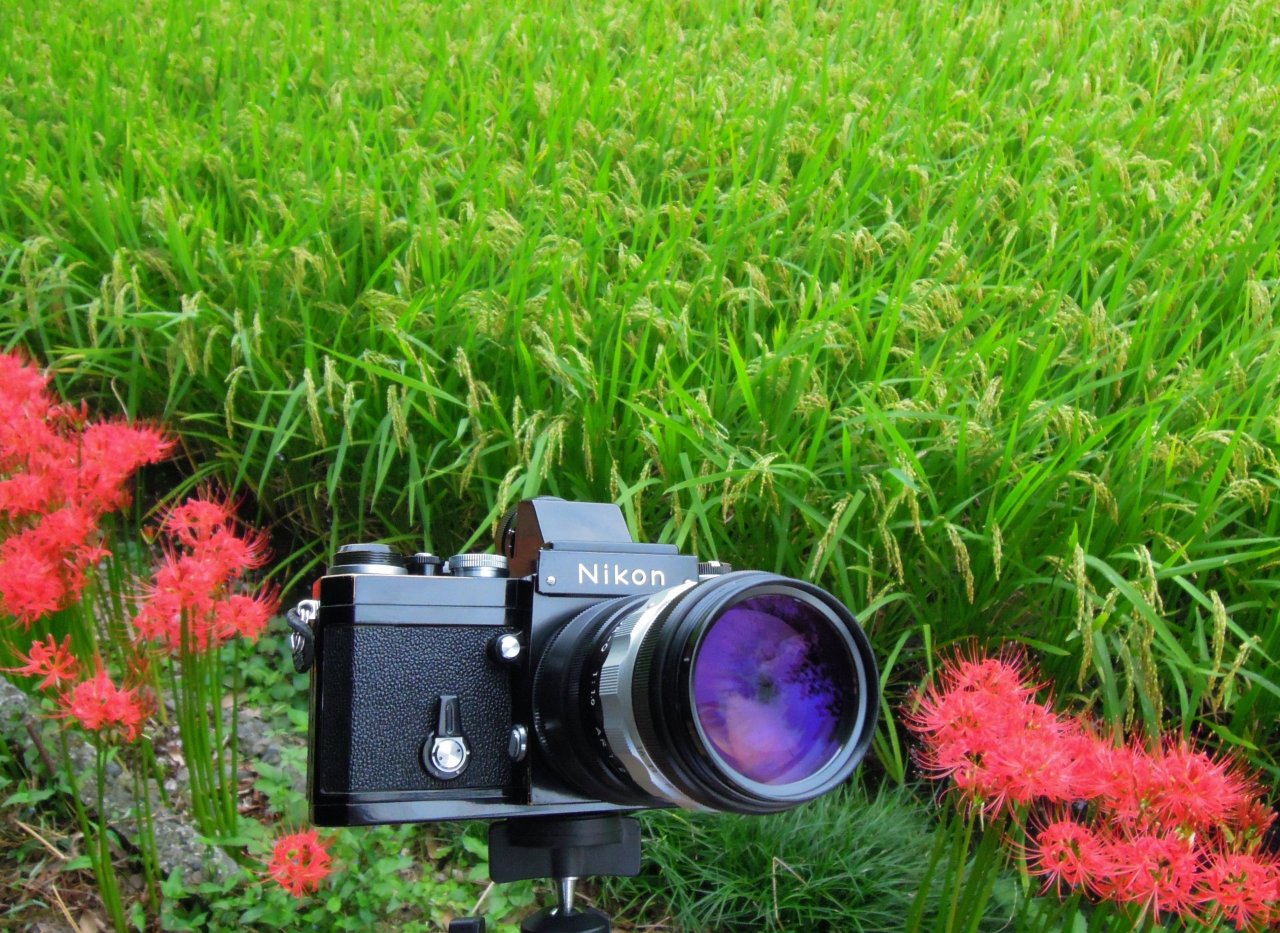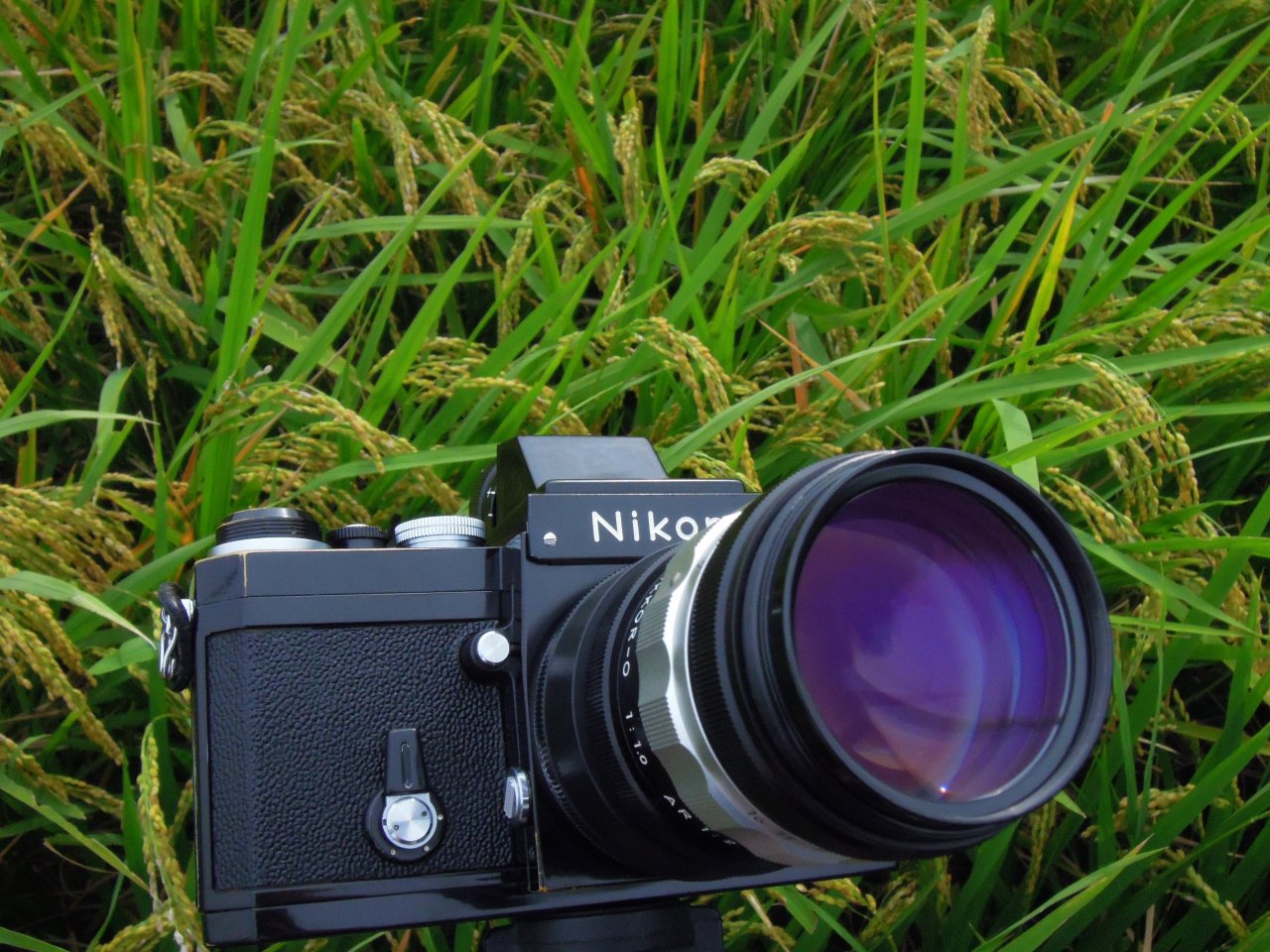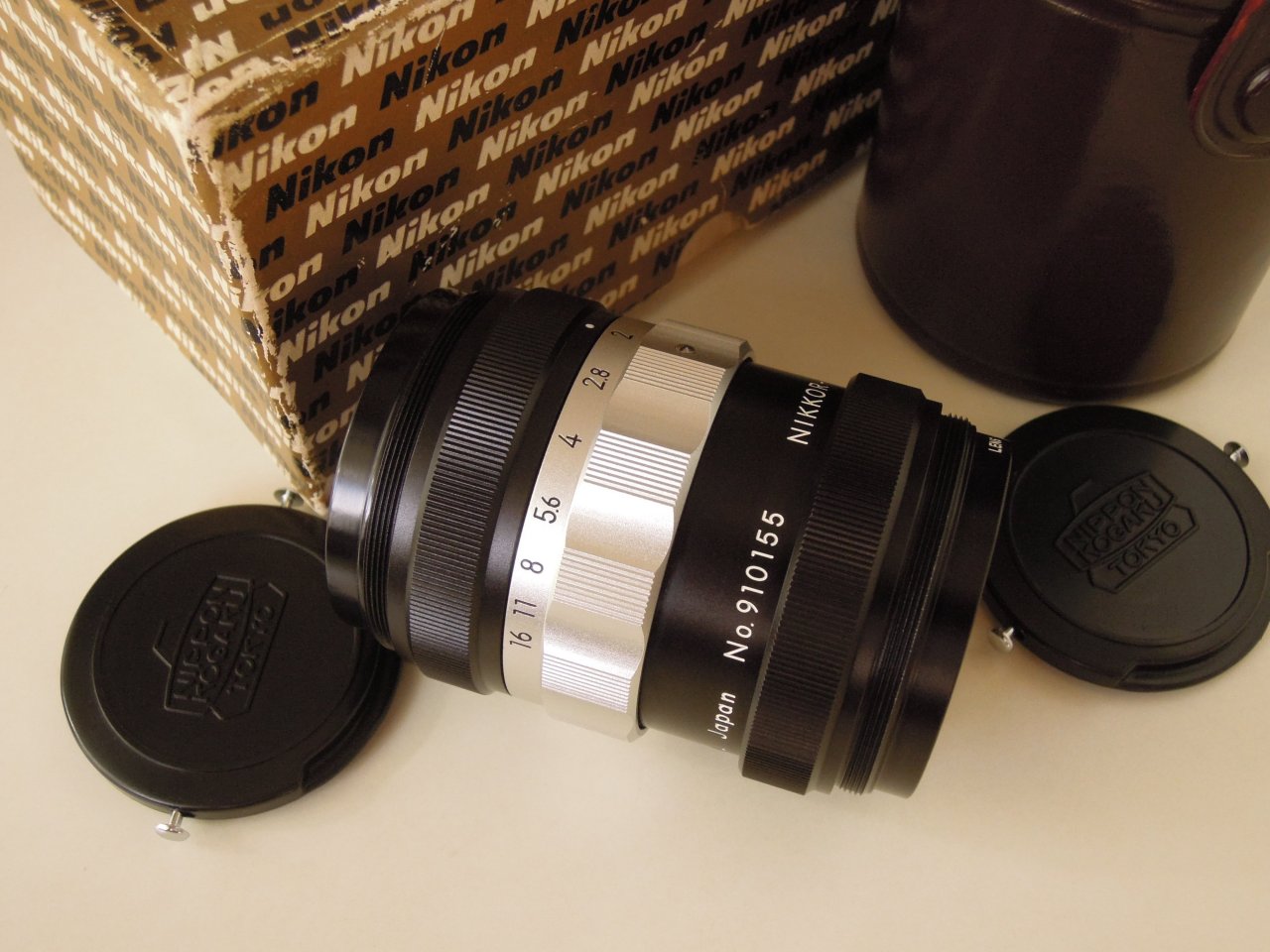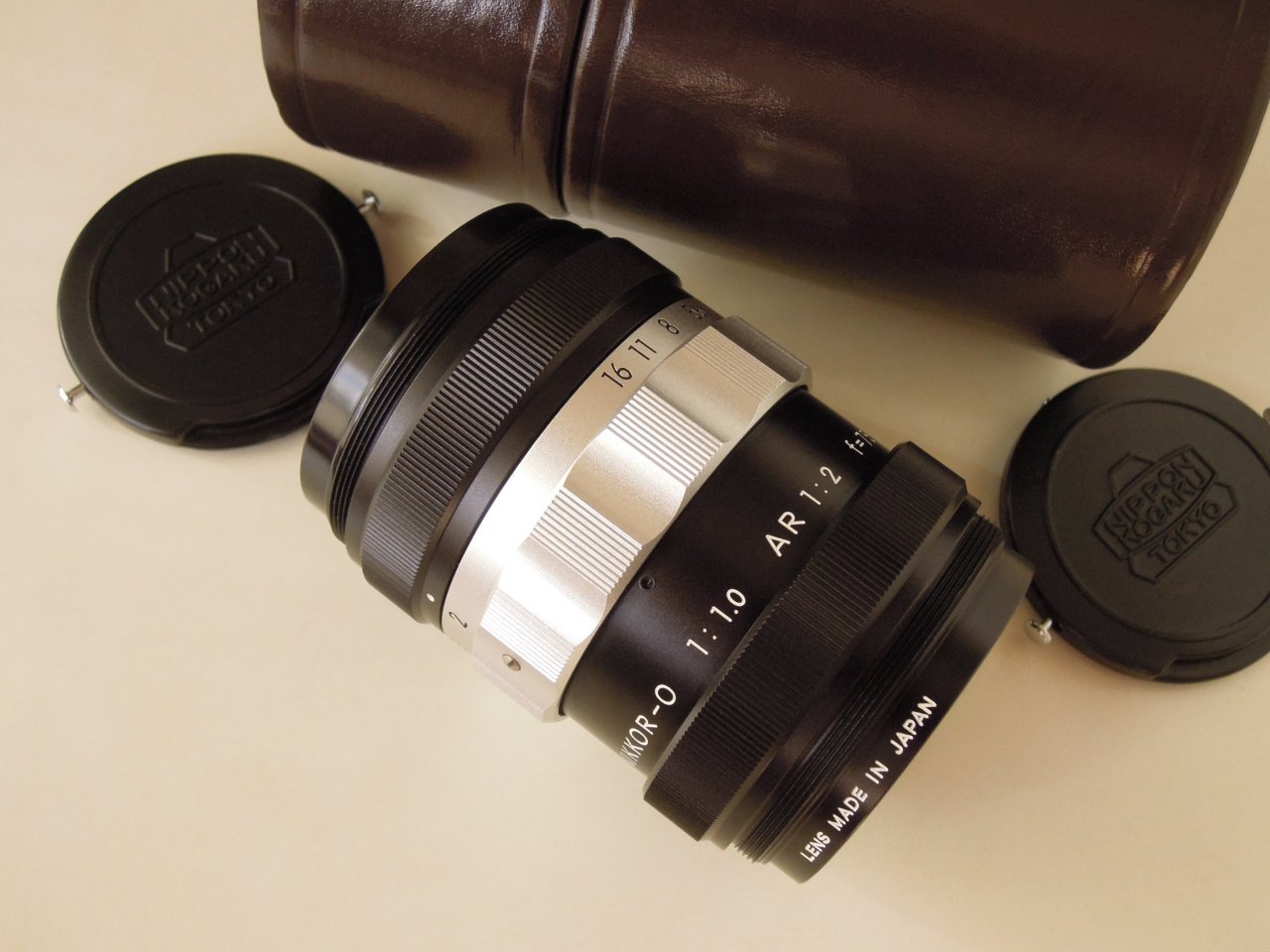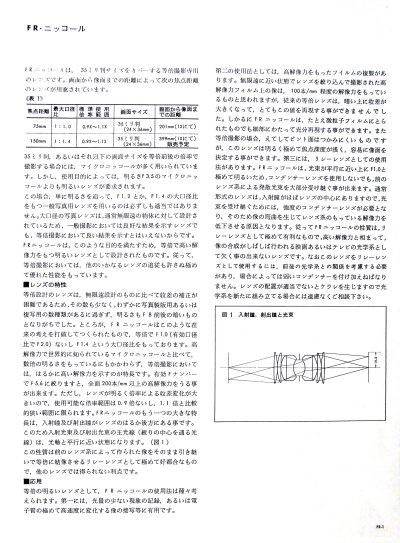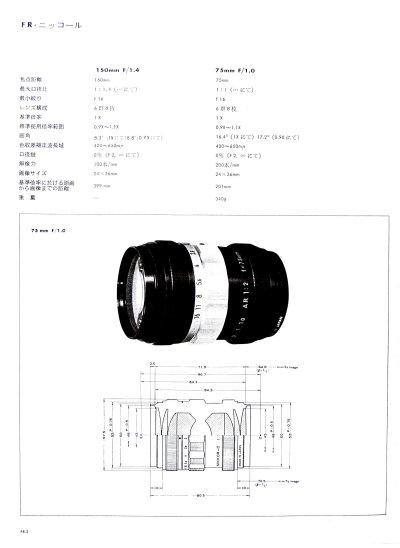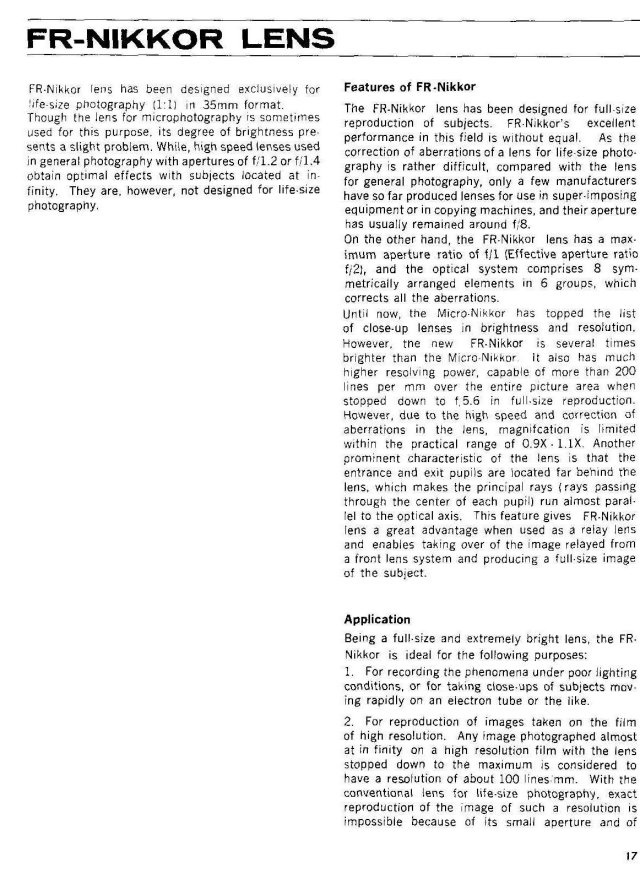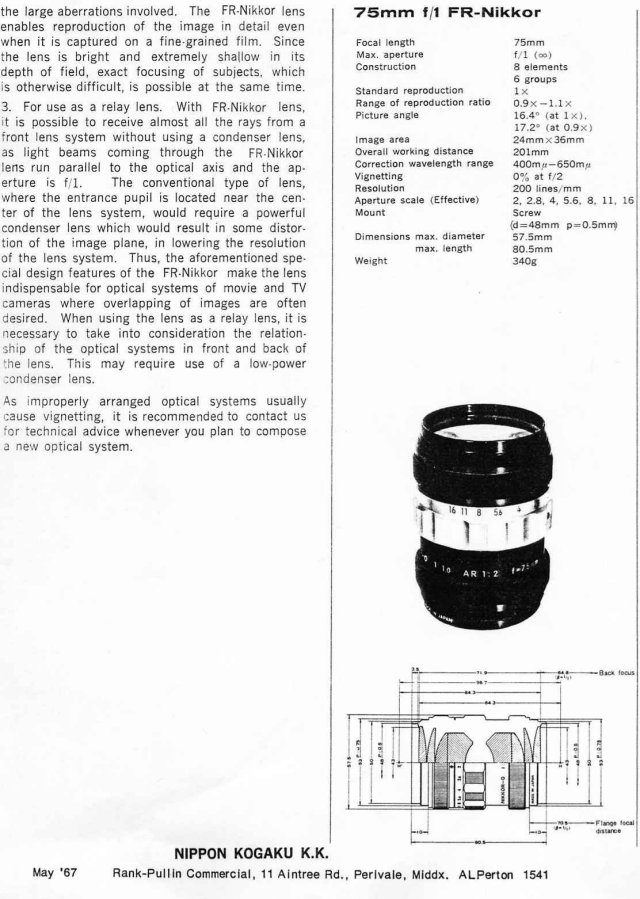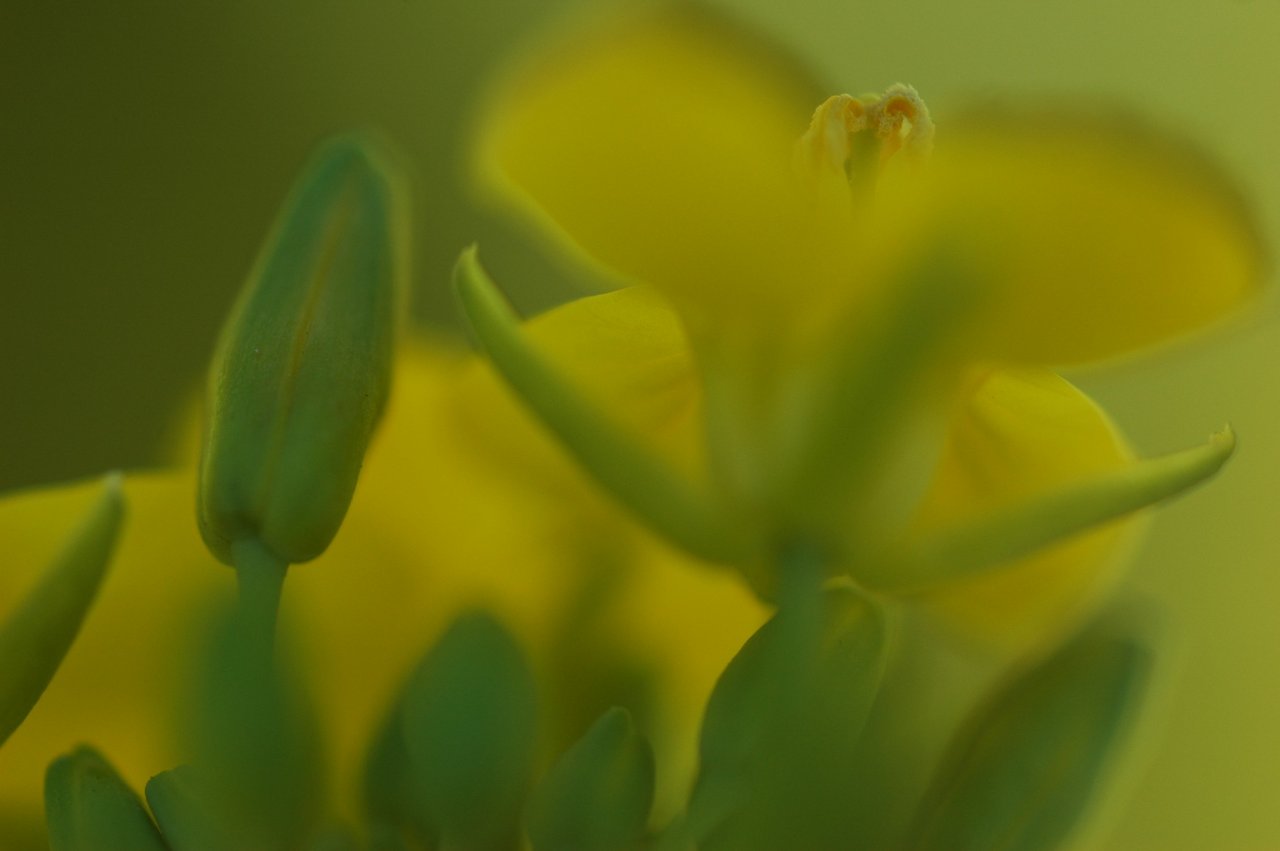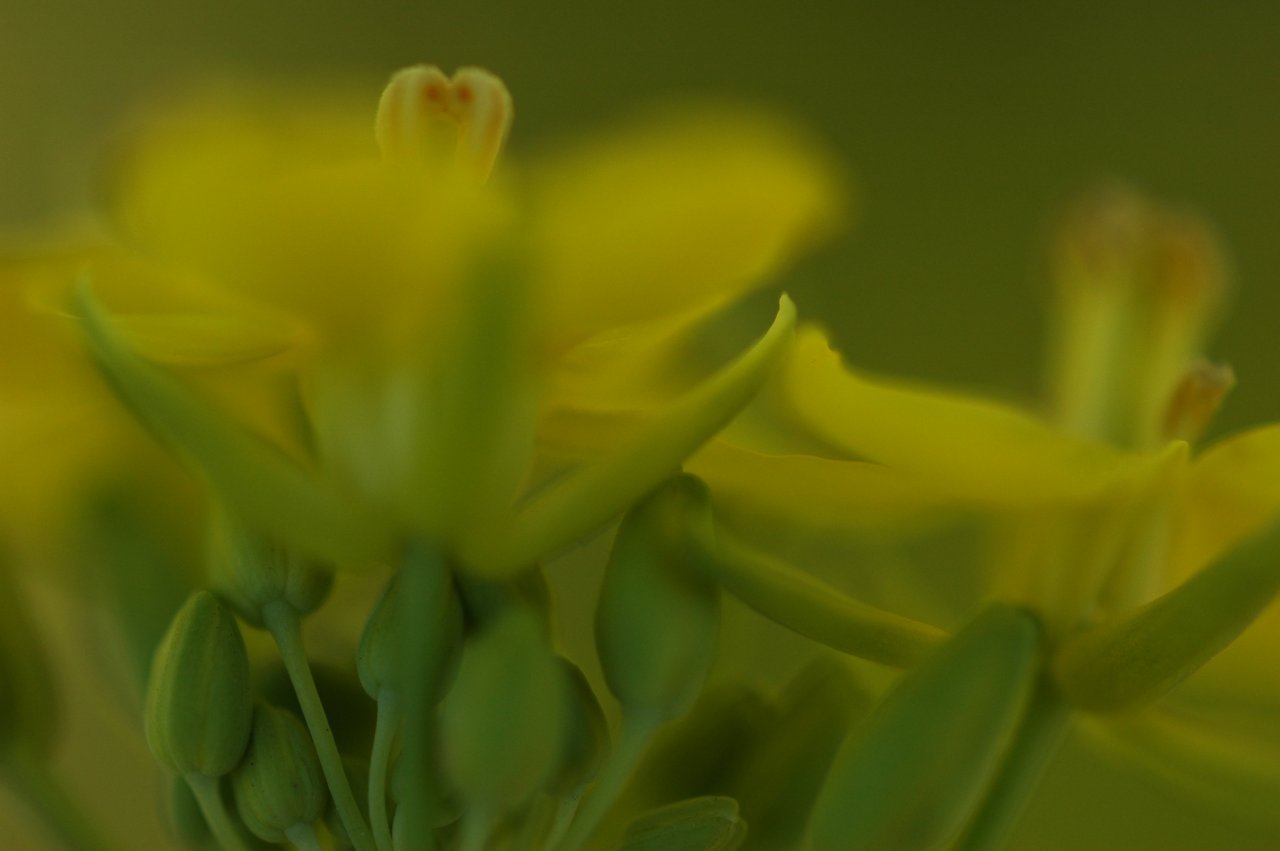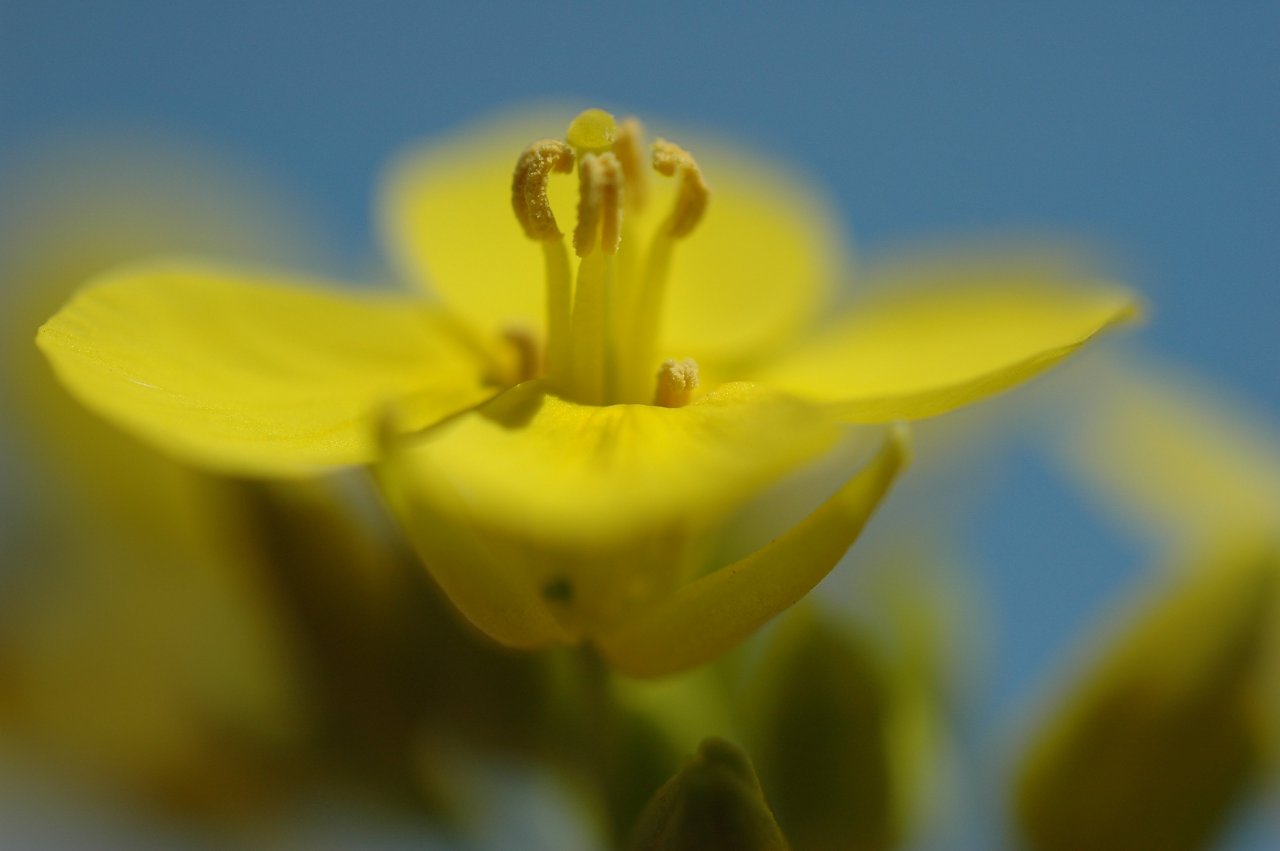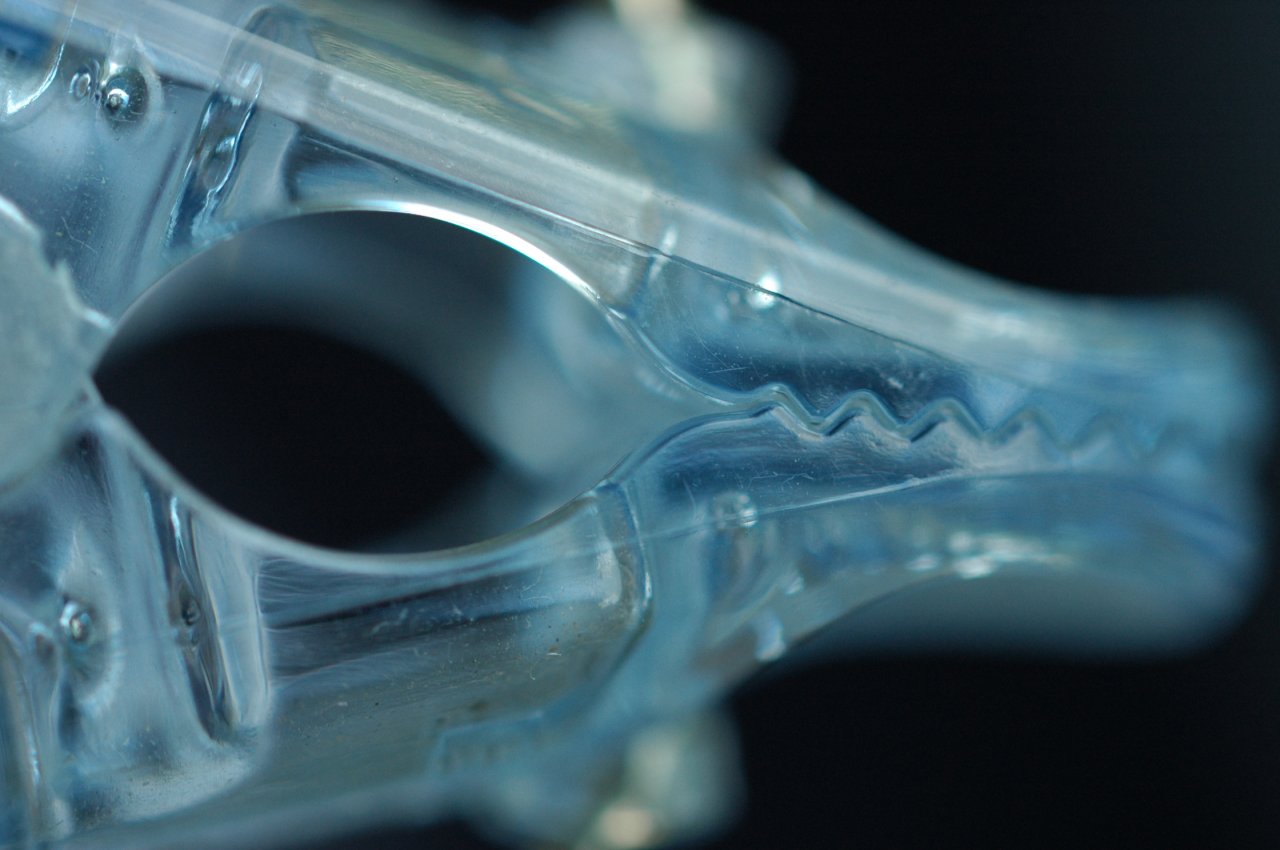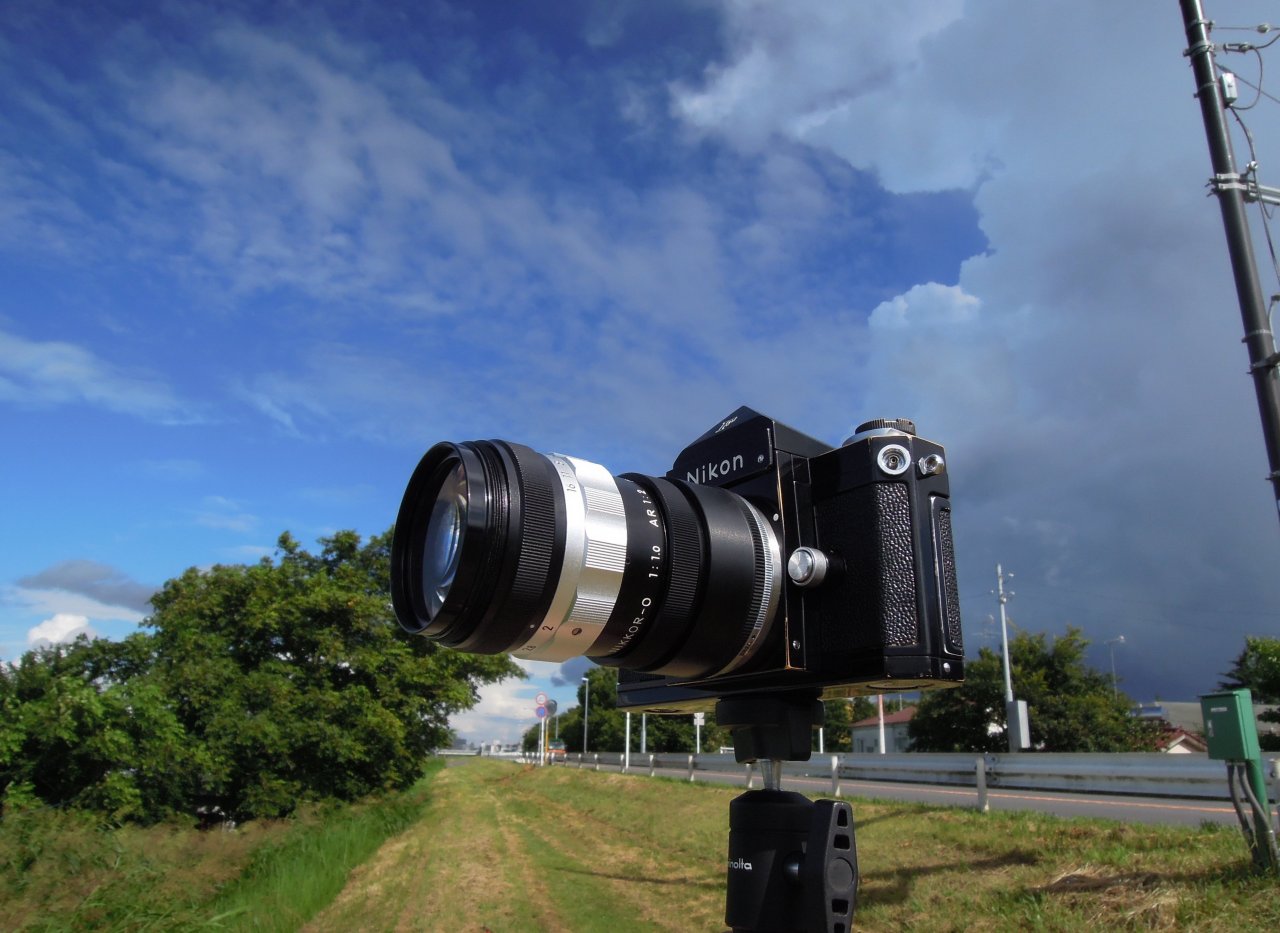
FR Nikkor 75mm F1.0 For Real Lens Real FR Nikkor 75mm F1.0 Lens Story Even if this lens appears in the auction, it is not introduced with the correct name. Repro Nikkor 75mm F2 is incorrect, correctly it is FR Nikkor 75mm F1.0. This is because accurate information is not disclosed on the Internet. I would like to tell you the accurate information. Please read this article carefully. If you would like to read the detailed contents, please refer to the Japanese page by your PC translation. Please enjoy and have fun!! Thank you!
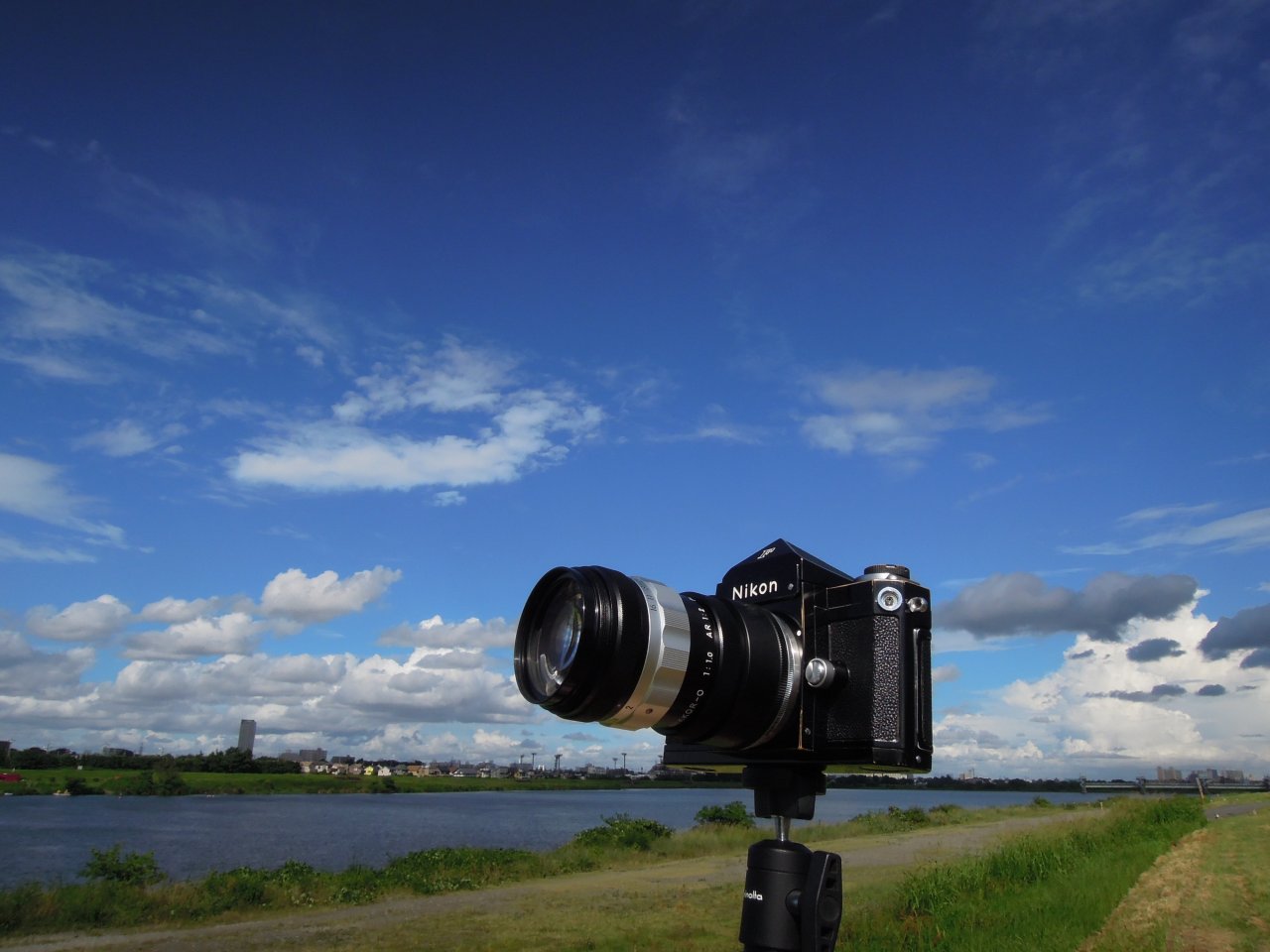
Super Sonic FR Nikkor 75mm F1.0 FR Nikkor 75mm F1.0 at Nikon Kenkyukai Tokyo 2006 You may remember it. This lens was released at the Nikon Kenkyukai Tokyo meeting of May 2006. It is FR Nikkor 75mm F1.0 No. 910155 lens.
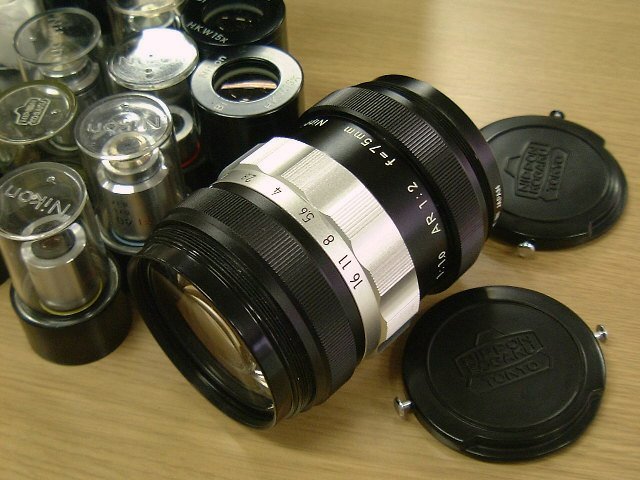
FR Nikkor 75mm F1.0 No. 910155 at Nikon Kenkyukai Tokyo FR Nikkor 75mm F1.0 and Swallow Swallow's Nest in Station Collector's Note The FR Nikkor 75mm F1.0 lens is a model produced before the Repro Nikkor 85mm F1.0 lens. The production period of the FR Nikkor 75mm F1.0 lens is from June 1965 to June 1967. According to the record, the total production volume is only 65 pieces. I think that the first 9101 of the serial number is prefix number. The production serial number started as 910101 and ended as 910165.
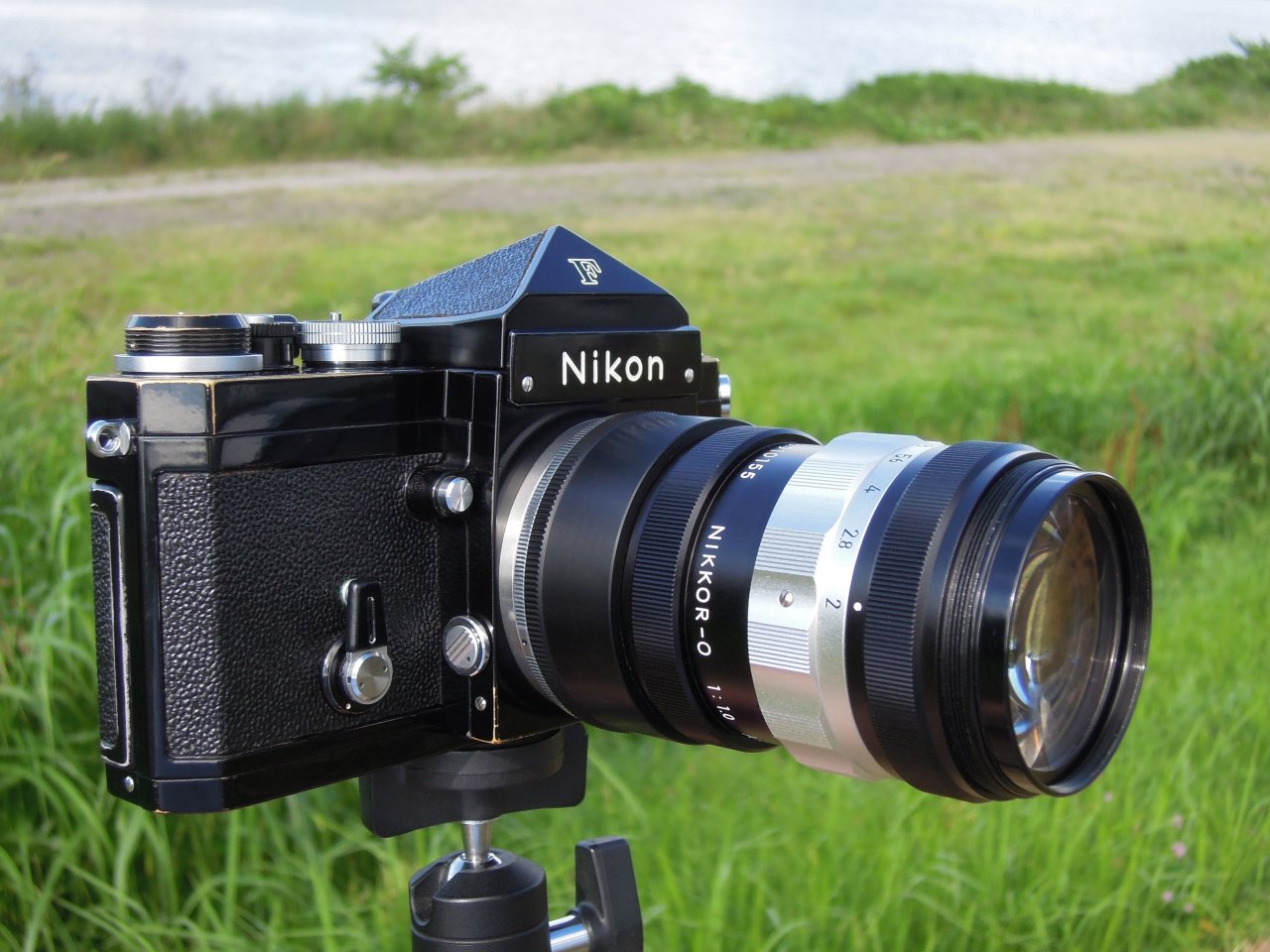
Cool Summer Morning FR Nikkor 75mm F1.0 in Japanese Autumn Beautiful F1.0 Purple Coating Specifications FR Nikkor 75mm F1
Focal length : 75 mm
Release date : 1965
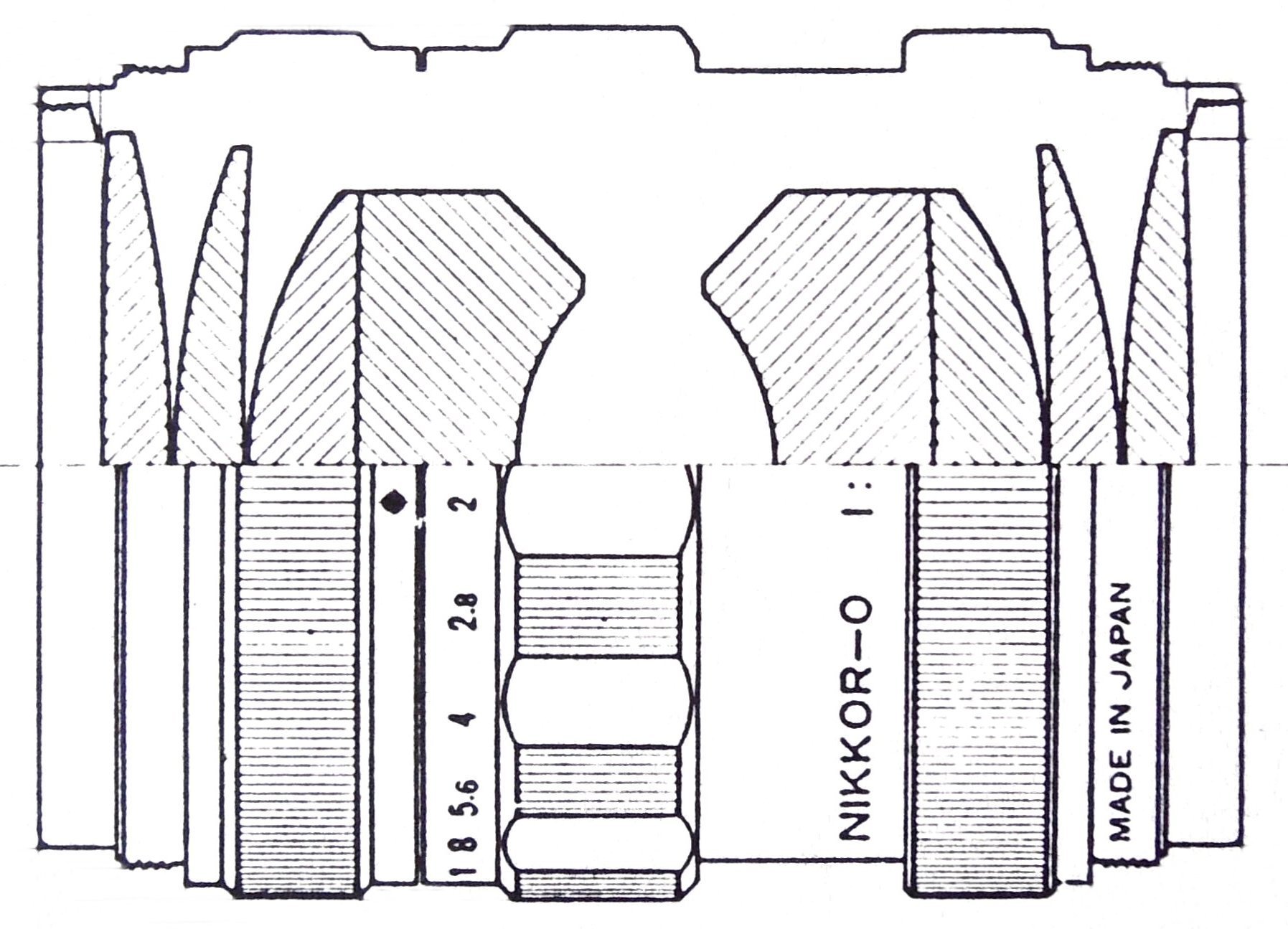
FR Nikkor 75mm F1.0 Lens Construction
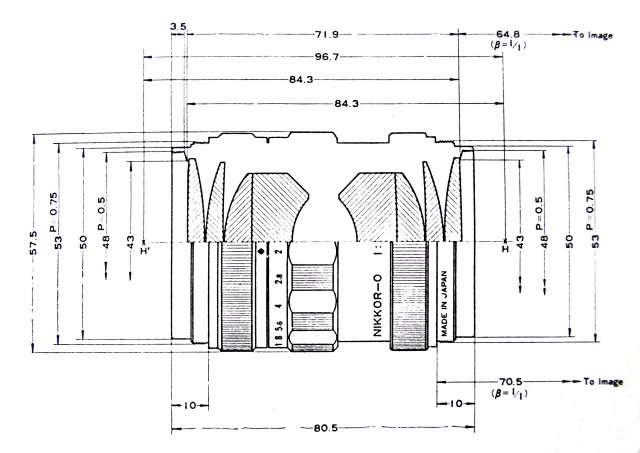
FR Nikkor 75mm F1.0 Lens Construction
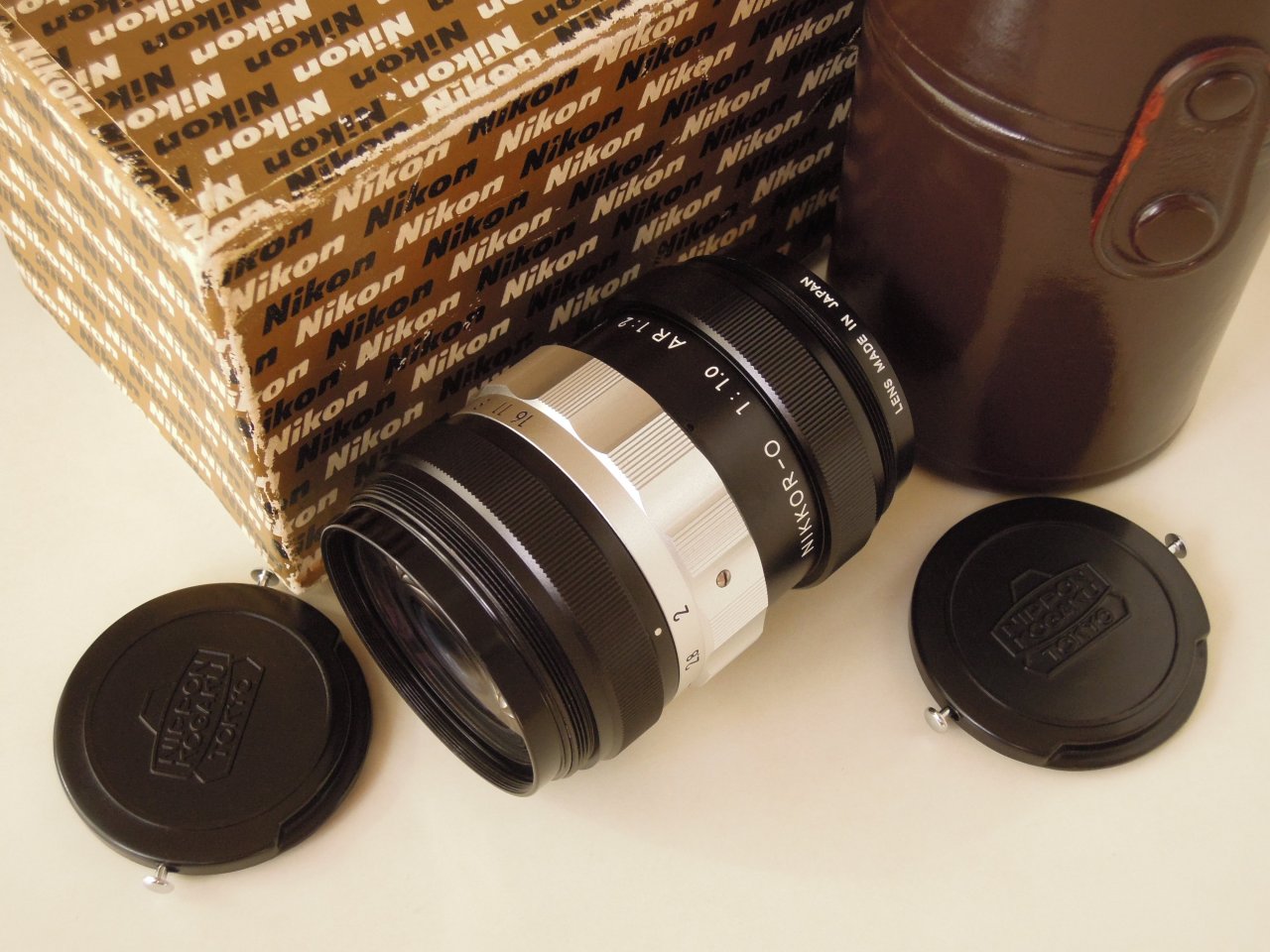
FR Nikkor 75mm F1.0 and 48mm Caps FR Nikkor 75mm F1.0 No. 910155 1:1.0 and AR 1:2 Engraving A Detailed Lens Story Technical materials are shown below as evidence of this article. The first two are Japanese versions. The next two are in English.
FR Nikkor 75mm F1.0 Specifications English
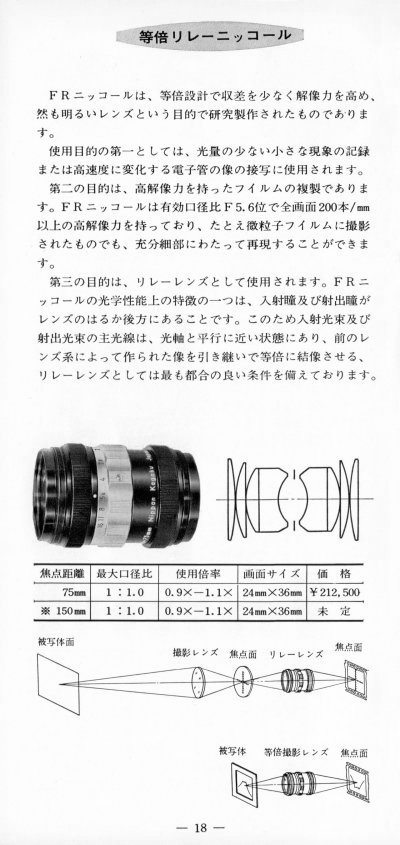
Nikkor, Nippon Kogaku, BAOL 6503-69, September 1966 FR-Nikkor Lens FR-Nikkor lens has been designed exclusively for life-size photography (1:1) in 35mm format. Though the lens for microphotography is sometimes used for this purpose, its degree of brightness presents a slight problem. While high speed lenses used in general photography with apertures of f/1.2 or f/1.4 obtain optimal effects with subjects located at infinity. They are, however, not designed for life-size photography. Features of FR-Nikkor The FR-Nikkor lens has been designed for full-size reproduction of subjects. FR-Nikkor's excellent performance in this field is without equal. As the correction of aberrations of a lens for life-size photography is rather difficult, compared with the lens for general photography, only a few manufacturers have so far produced lenses for use in super-imposing equipment or in copying machines, and their aperture has usually remained around f/8. On the other hand, the FR-Nikkor lens has a maximum aperture ratio of f/1 (Effective aperture ratio f/2), and the optical system comprises 8 symmetrically arranged elements in 6 groups, which corrects all the aberrations. Until now, the Micro-Nikkor has topped the list of close-up lenses in brightness and resolution. However, the new FR-Nikkor is several times brighter than the Micro-Nikkor. It also has much higher resolving power, capable of more than 200 lines per mm over the entire picture area when stopped down to f/5.6 in full-size reproduction. However, due to the high speed and correction of aberrations in the lens, magnification is limited within the practical range of 0.9X-1.1X. Another prominent characteristic of the lens is that the entrance and exit pupils are located far behind the lens, which makes the principal rays (ray passing through the center of each pupil) run almost parallel to the optical axis. This feature gives FR-Nikkor lens a great advantage when used as a relay lens and enables taking over of the image relayed from a front lens system and producing a full-size image of the subject.
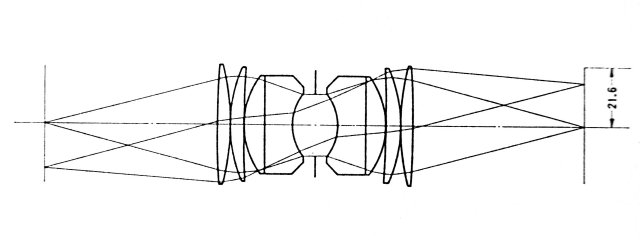
Entrance Pupil, Exit Pupil and Luminous Flux Application Being a full-size and extremely bright lens, the FR-Nikkor is ideal for the following purposes: 1. For recording the phenomena under poor lighting conditions, or for taking close-ups of subjects moving rapidly on an electron tube or the like. 2. For reproduction of images taken on the film of high resolution. Any image photographed almost at infinity on a high-resolution film with the lens stopped down to the maximum is considered to have a resolution of about 100 lines/mm. With the conventional lens for life-size photography, exact reproduction of the image of such a resolution is impossible because of its small aperture and of the large aberrations involved. The FR-Nikkor lens enables reproduction of the image in detail even when it is captured on a fine-grained film. Since the lens is bright and extremely shallow in its depth of field, exact focusing of subjects, which is otherwise difficult, is possible at the same time. 3. For use as a relay lens. With FR-Nikkor lens, it is possible to receive almost all the rays from a front lens system without using a condenser lens, as light beams coming through the FR-Nikkor lens run parallel to the optical axis and the aperture is f/1. The conventional type of lens, where the entrance pupil is located near the center of the lens system, would require a powerful condenser lens which would result in some distortion of the image plane, in lowering the resolution of the lens system. Thus, the aforementioned special design features of the FR-Nikkor make the lens indispensable for optical systems of movie and TV cameras where overlapping of images are often desired. When using the lens as a relay lens, it is necessary to take into consideration the relationship of the optical systems in front and back of the lens. This may require use of a low-power condenser lens. As improperly arranged optical systems usually cause vignetting, it is recommended to contact us for technical advice whenever you plan to compose a new optical system. What is FR? This lens is not REPRO Nikkor but FR Nikkor. The meaning of FR is not stated in the official Nikon document. However, in the data of 1965, it is described as "Full Size Reproduction and Relay Lens Series (FR Nikkor Series) ". There is a high possibility that FR Nikkor is an abbreviation of Full-size Reproduction Nikkor.
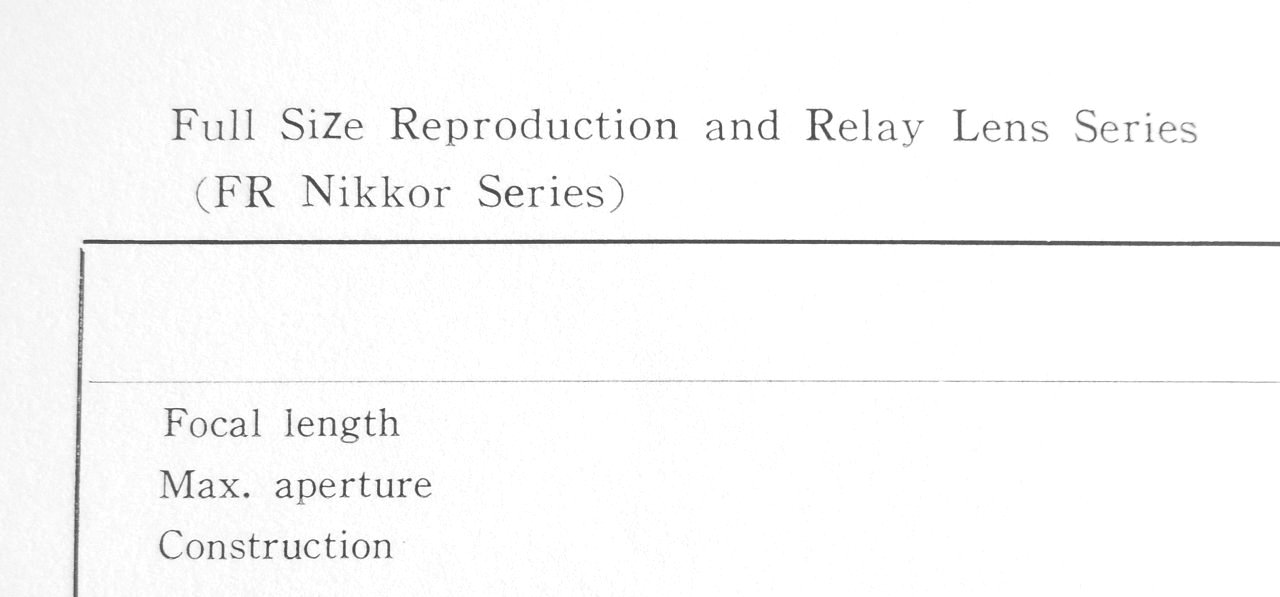
Full Size Reproduction and Relay Lens Series (FR Nikkor Series) , 1965 What is AR? Do you know the meaning of AR of AR 1:2? When I was investigating the technical material "REPRO - NIKKOR LENSES", I found that the meaning of the abbreviation of AR is described. AR is the abbreviation of effective Aperture Ratio.

The Meaning of the Abbreviation of AR How to use the FR Nikkor 75mm F1.0 I custom made the Nikon F mount adapter to use the FR Nikkor 75mm F1.0 lens. Please refer to the article Special Designed Mount Adapter for Repro Nikkor 85mm F1.0 Lens .
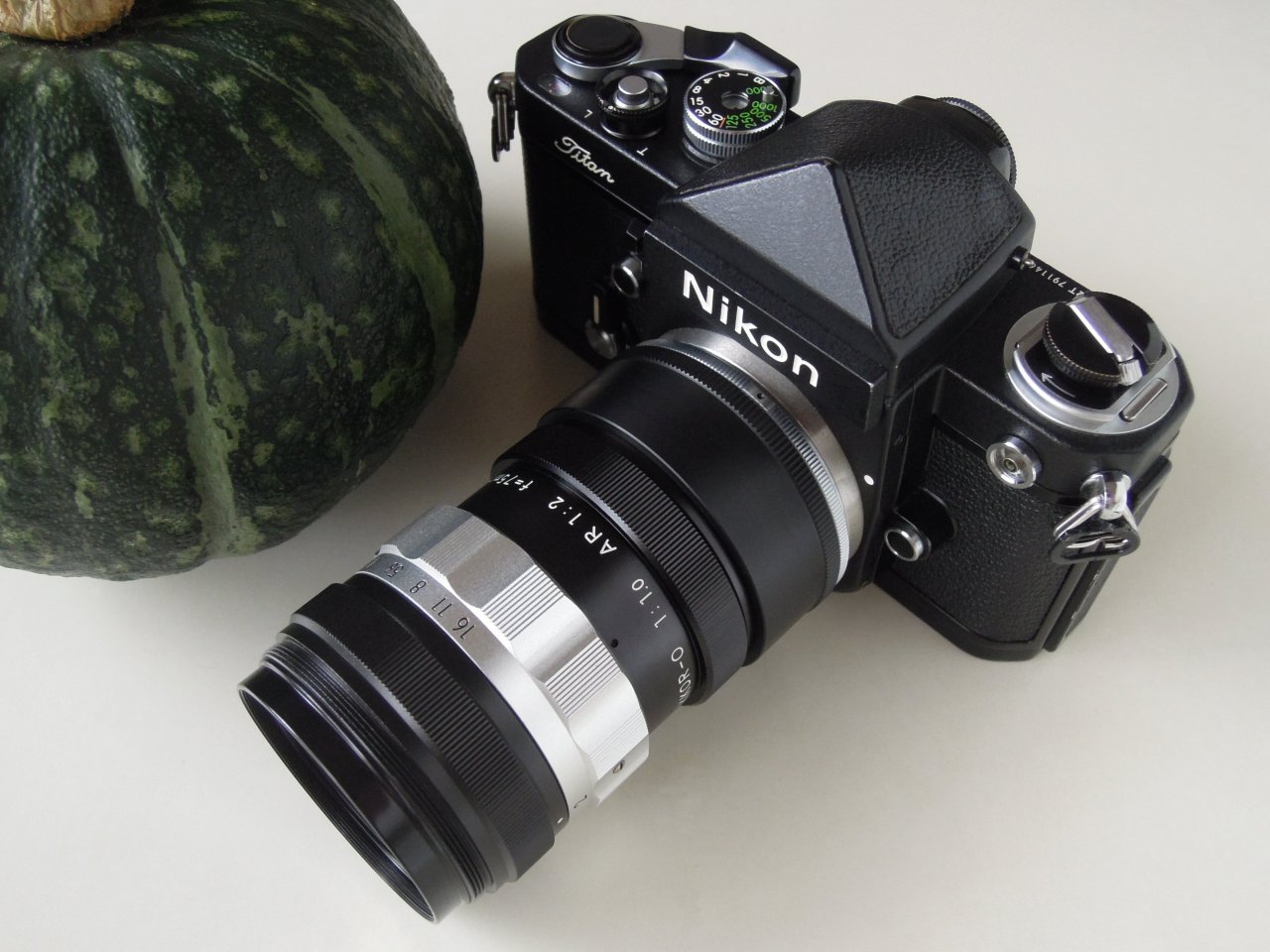
Nikon F Mount FR Nikkor 75mm F1.0 FR Nikkor 75mm F1.0 Photography I would like to show you some photographs taken by the FR Nikkor 75mm F1.0 Lens. You can get the large size image by clicking on the following some photographs.

Really Japanese Elegance Fresh Pretty Colors Grand Fine Day Fantastic Silent Colors Strong Spring Air Brilliant Canola Flower Serious Plastic Crocodile
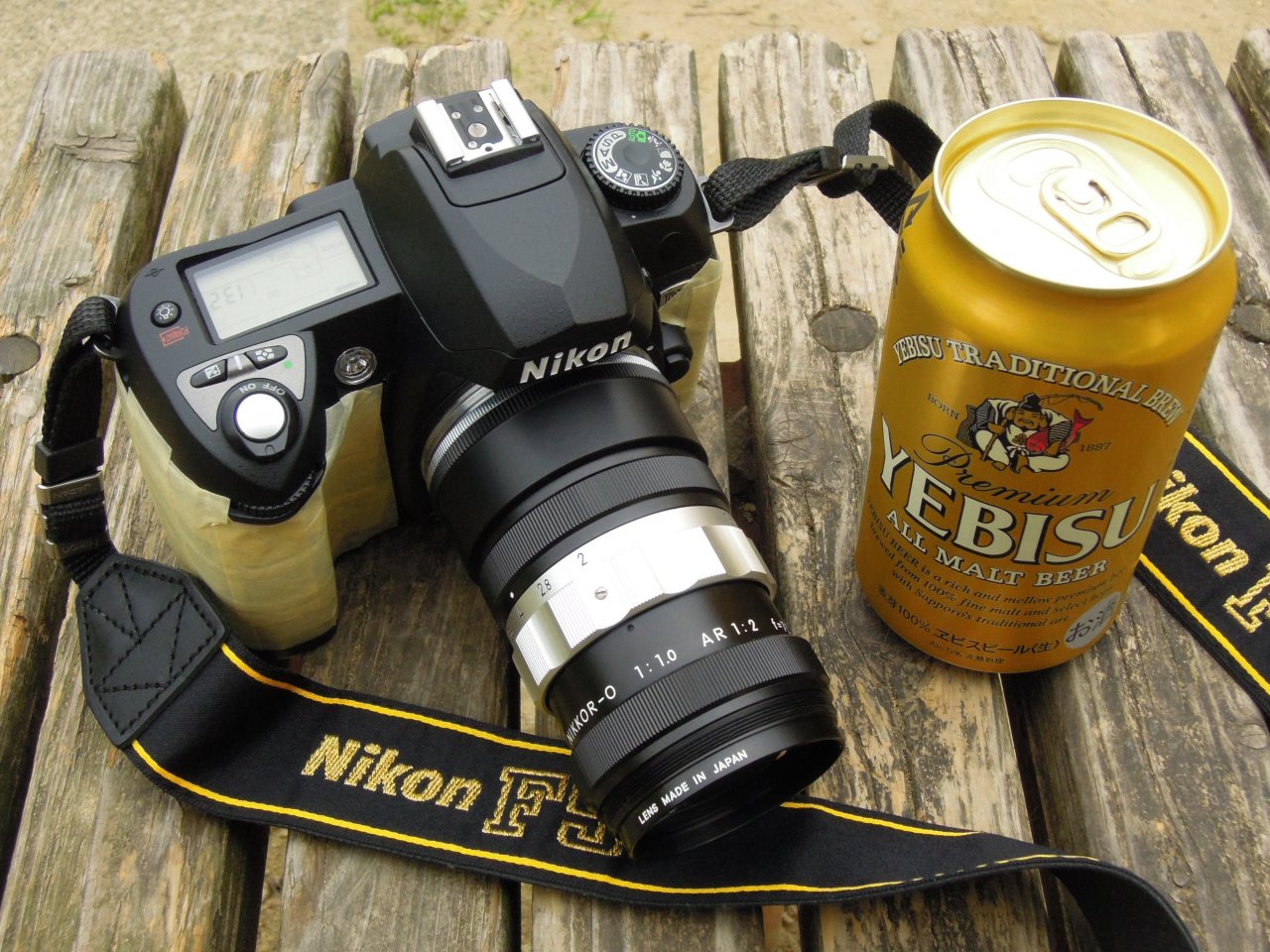
FR Nikkor 75mm F1.0 and Beer
Copyright Michio Akiyama, Tokyo Japan 2016, 2025 |
